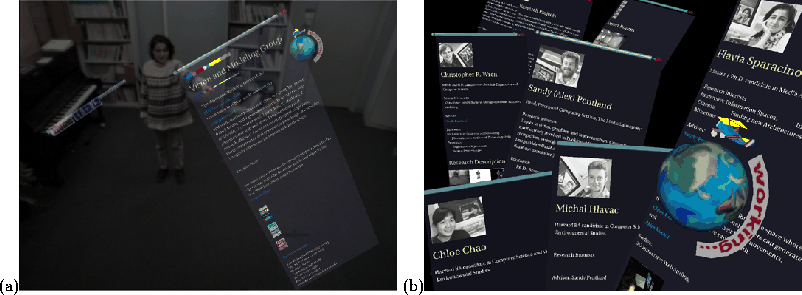
Figure 5.3:
(a) User browsing the web in NetSpace (b)
NetSpace landscape with some of the authors' web pages
A gesture-based interface mapping interposes a layer of pattern recognition between the input features and the application control. When an application has a discrete control space, this mapping allows patterns in feature space, better known as gestures, to be mapped to the discrete inputs. The set of patterns form a gesture-language that the user must learn. It is worth noting that this kind of rigid gesture-language tends to be sensitive to failures in tracking, classification, and user training. Systems that employ this kind of mapping must have very flexible, and quick, mechanisms for resolving misunderstandings. See Sections 5.5 and 5.6, for interesting answers to this problem. Sparacino and Hlavac's[22] Netspace is an example of an application that uses a gesture-based mapping.
NetSpace is an immersive, interactive web browser that makes use of people's strength at remembering the surrounding 3D spatial layout. NetSpace maps the contents of URLs into a 3D graphical world projected on the large IVE screen. This gives the user a sense the URLs existing in a surrounding 3D environment. To navigate this virtual 3D environment, users stand in front of the screen and use voice and hand gestures to explore (Figure 5.3).